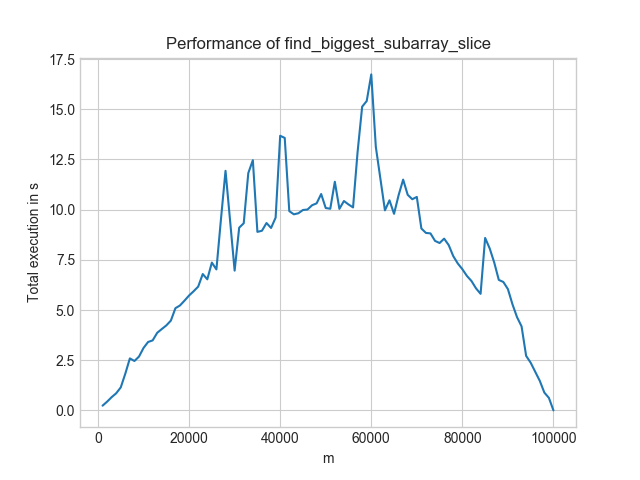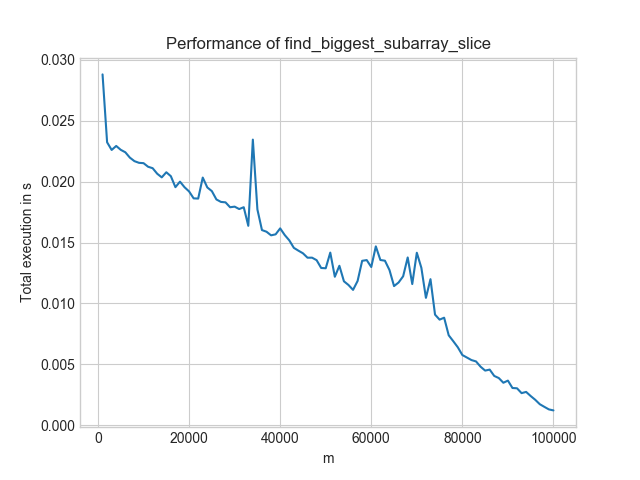I recently taught a course about improving code for performance. An obvious performance improvement is to not execute unnecessary operations. I lacked a good example when I gave the course, but here is one: Find value of the largest contiguous sub-array of fixed length in a huge array.
This is a toy example, of course, but it shows the idea quite well.
The Code is on GitHub.
Small Example
Input:
- array: [7, 9, 2, 0, 5, 2, 0, 1, 1, 2]
- sub-array length m = 3
Contiguous sub-arrays of the given length:
[7, 9, 2], value = 18[9, 2, 0], value = 11[2, 0, 5], value = 7[0, 5, 2], value = 7[5, 2, 0], value = 7[2, 0, 1], value = 3[0, 1, 1], value = 2[1, 1, 2], value = 4
Output: 18
Inefficient Solution
The following solution makes use of the slicing notation. It is short, easy to read and mostly pretty efficient:
from typing import List
def find_biggest_subarray_slice(array: List[int], m: int) -> int:
return max(sum(array[i : i + m]) for i in range(len(array) - m + 1))
Except that it has one flaw: It makes too many additions and accesses list elements way more often than necessary
Efficient Solution
from typing import List
def find_biggest_subarray_iterative(array: List[int], m: int) -> int:
value = sum(array[0:m])
largest_sub_array = value
for remove, add in zip(array, array[m:]):
value = value - remove + add
largest_sub_array = max(value, largest_sub_array)
return largest_sub_array
Comparison
The inefficient solution is in \(\mathcal{O}((n - m) \cdot m)\), the efficient one is in \(\mathcal{O}(n - m)\). So you will notice the difference clearly when you compare the execution times with big \(m\).
The inefficient solution changes its execution time like as shown in the image below for increasing m and contant n = 100,000:

In contrast, the efficient solution looks like this:

Two things to notice:
- Worst-Case: For the inefficient solution, it is \(m = n/2\). For the efficient solution, it is \(m = 1\).
- Level: The efficient solution is always below 0.03s. The inefficient one is only for the best-case scenario (\(n=m\)) below that. And even then, the efficient solution is at 0.0008s whereas the inefficient one is at 0.001s.
- Speed-ups: If you look at \(m = 60,000\), the more efficient solution gives a 1000× speedup!